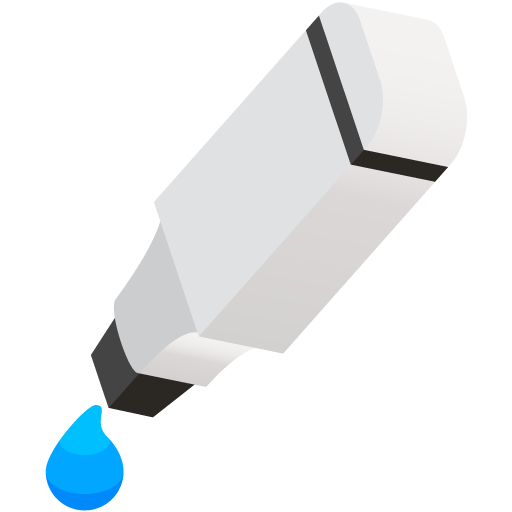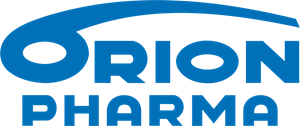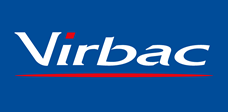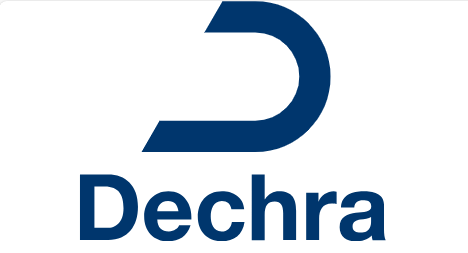Combination therapy
No results were found for your selected species
Advantix (10 - 25 kg)
ATC code
Species
Dogs
Indications
For dogs with, or at risk from mixed infestations by fleas, biting lice, ticks, sand flies, mosquitos and stable flies. The veterinary medicinal product is only indicated when used against all the following parasite species is required at the same time.
For the treatment and prevention of flea (Ctenocephalides canis, Ctenocephalides felis) infestation.
Fleas on dogs are killed within one day following treatment. One treatment prevents further flea infestation for four weeks. The veterinary medicinal product can be used as part of a treatment strategy for flea allergy dermatitis (FAD). Treatment of biting lice (Trichodectes canis).
The veterinary medicinal product has persistent acaricidal and repellent efficacy against tick infestations (Rhipicephalus sanguineus and Ixodes ricinus for four weeks, and Dermacentor reticulatus for three weeks).
Reduction of the risk of transmission of the vector-borne pathogen Ehrlichia canis, thereby reducing the risk of canine ehrlichiosis by acaricidal and repellent activity on the tick vector Rhipicephalus sanguineus. The reduction in risk has been shown to begin from three days following application of the veterinary medicinal product and to persist for four weeks.
Ticks already on the dog may not be killed within two days after treatment and may remain attached and visible. Therefore the removal of ticks already on the dog at the time of treatment is recommended, in order to prevent them from attaching and having a blood meal.
One treatment provides repellent (anti-feeding) activity against sand flies (Phlebotomus papatasi for two weeks and Phlebotomus perniciosus for three weeks), against mosquitoes (Aedes aegypti for two weeks and Culex pipiens for four weeks) and against stable flies (Stomoxys calcitrans) for four weeks.
Reduction of the risk of transmission infection of the vector-borne pathogen Leishmania infantum, thereby reducing the risk of canine leishmaniosis by repellent (anti-feeding) activity on sandflies (vector Phlebotomus papatasi for two weeks and vector Phlebotomus perniciosus for three weeks). The effect is indirect due to the veterinary medicinal product’s activity against the vector.
Dose to be administered and administration route
Spot-on use. For external use only. Apply only to undamaged skin.
The recommended minimum dose is:
10 mg/kg body weight (bw) imidacloprid and 50 mg/kg body weight (bw) permethrin.
Dosing Scheme:
|
Dogs (kg bw) |
Trade name |
Volume (ml) |
Imidacloprid (mg/kg body weight) |
Permethrin (mg/kg body weight) |
|
> 10 kg ≤ 25 kg |
Advantix 250 mg + 1250 mg |
2.5 ml |
10 - 25 |
50 – 125 |
Underdosing could result in ineffective use and may favour resistance development. To ensure a correct dosage, body weight should be determined as accurately as possible.
Ticks, fleas:
The need and frequency of re-treatment(s) should be based on local epidemiological situation and the animal’s lifestyle.
Biting lice:
In case of biting louse infestation, a further veterinary examination 30 days after treatment is recommended as some animals may require a second treatment.
Sand flies:
To protect a dog over the whole sand fly season, treatment should be compliantly continued throughout.
Method of administration
Remove one pipette from the package. Hold applicator pipette in an upright position, twist and pull cap off. Turn the cap around and place the other end of cap back on pipette. Twist cap to break seal, then remove cap from pipette.

With the dog standing still, the entire contents of the pipette should be applied evenly to four spots on the top of the back from the shoulder to the base of the tail. At each spot, part the hair until the skin is visible. Place the tip of the pipette on the skin and gently squeeze to expel a portion of the solution on the skin. Do not apply an excessive amount of solution at any one spot that could cause some of the solution to run off the side of the dog.

Adverse reactions
Dogs.
|
Uncommon (1 to 10 animals / 1,000 animals treated): |
Application site hair change (e.g. greasy fur), Application site itching Vomiting |
|
Rare (1 to 10 animals / 10,000 animals treated): |
Application site erythema, Application site hair loss, Application site inflammation Diarrhoea |
|
Very rare (<1 animal / 10,000 animals treated, including isolated reports): |
Agitation1,2,4, Restlessness1,2,4, Rolling1,2,4, Whining1,2,4 Hypersalivation1,2,4 Decreased appetite1,2,4, Lethargy1,3 Neurological signs (Abnormal movement and Twitching)1,2,4, Tremor3 Rubbing1,4, Scratching1,4 |
1 Generally self-resolving.
2 In dogs susceptible to permethrin.
3 Following inadvertent oral uptake in dog. There is no known specific antidote; symptomatic treatment recommended.
4 Transient.
Reporting adverse events is important. It allows continuous safety monitoring of a veterinary medicinal product. Reports should be sent, preferably via a veterinarian, to either the marketing authorisation holder or the national competent authority via the national reporting system. See the package leaflet for respective contact details.
Dispensing
POM-V - Prescription Only Medicine – VeterinarianSUMMARY OF PRODUCT CHARACTERISTICS
1. NAME OF THE VETERINARY MEDICINAL PRODUCT
Advantix Spot-on solution for dogs over 10 kg up to 25 kg
2. QUALITATIVE AND QUANTITATIVE COMPOSITION
Each pipette of 2.5 ml contains:
Active substances:
Imidacloprid: 250.0 mg
Permethrin (40/60): 1250.0 mg
Excipient(s):
Butylhydroxytoluene (E321): 2.5 mg
For the full list of excipients, see section 6.1.
3. PHARMACEUTICAL FORM
Spot-on solution
Clear yellowish to brownish solution
4. CLINICAL PARTICULARS
4.1 Target species
Dogs (over 10 kg up to 25 kg)
For dogs less than or equal to 10 kg or more than 25 kg body weight, use the appropriate Advantix Spot-on solution product (see section 4.9).
4.2 Indications for use, specifying the target species
For the treatment and prevention of flea (Ctenocephalides canis, Ctenocephalides felis) infestation.
Fleas on dogs are killed within one day following treatment. One treatment prevents further flea infestation for four weeks. The product can be used as part of a treatment strategy for flea allergy dermatitis (FAD).
For the treatment of biting lice (Trichodectes canis).
The product has persistent acaricidal and repellent efficacy against tick infestations (Rhipicephalus sanguineus and Ixodes ricinus for four weeks, and Dermacentor reticulatus for three weeks).
By repelling and killing the tick vector Rhipicephalus sanguineus, the product reduces the likelihood of transmission of the pathogen Ehrlichia canis, thereby reducing the risk of canine ehrlichiosis. The reduction in risk has been shown in studies to commence from 3 days following application of the product and to persist for 4 weeks.
Ticks already on the dog may not be killed within two days after treatment and may remain attached and visible. Therefore the removal of ticks already on the dog at the time of treatment is recommended, in order to prevent them from attaching and having a blood meal.
One treatment provides repellent (anti-feeding) activity against sand flies (Phlebotomus papatasi for two weeks and Phlebotomus perniciosus for three weeks), against mosquitoes (Aedes aegypti for two weeks and Culex pipiens for four weeks) and against stable flies (Stomoxys calcitrans) for four weeks.
Reduction of the risk of infection with Leishmania infantum via transmission by sandflies (Phlebotomus perniciosus) for up to 3 weeks. The effect is indirect due to product’s activity against the vector.
4.3 Contraindications
In the absence of available data the product should not be used on puppies of less than 7 weeks of age or 10 kg of weight.
Do not use in cases of hypersensitivity to the active substances or to any of the excipients.
Do not use on cats. (Refer to section 4.5 – Special precautions for use).
4.4 Special warnings for each target species
There may be an attachment of single ticks or bites by single sand flies or mosquitoes. For this reason, a transmission of infectious diseases by these parasites cannot be completely excluded if conditions are unfavourable.
It is recommended to apply the treatment at least 3 days before expected exposure to E. canis. With regard to E. canis, studies have demonstrated a reduced risk of canine ehrlichiosis in dogs exposed to Rhipicephalus sanguineus ticks infected with E. canis from 3 days following application of the product and to persist for 4 weeks.
Immediate protection against sandflies bites is not documented. Treated dogs for the reduction of the risk of infection with Leishmania infantum via transmission by sandflies P. Perniciosus should be kept in a protected environment during the first 24 hours after the initial treatment application.
4.5 Special precautions for use
i) Special precautions for use in animals
Care should be taken to avoid the content of the pipette coming into contact with the eyes or mouth of the recipient dogs.
Care should be taken to administer the product correctly as described under section 4.9. In particular oral uptake due to the licking of the application site by treated or incontact animals should be avoided.
Do not use on cats.

This product is extremely poisonous to cats and could be fatal due to the unique physiology of cats which is unable to metabolise certain compounds including permethrin. To prevent cats from being accidentally exposed to the product, keep treated dogs away from cats after treatment until the application site is dry. It is important to ensure that cats do not groom the site of application on a dog, which has been treated with this product. Seek veterinary advice immediately if this occurs. Consult your veterinary surgeon before using the product on sick and debilitated dogs.
ii) Special precautions to be taken by the person administering the veterinary medicinal product to animals
Avoid contact between the product and skin, eyes or mouth.
Do not eat, drink or smoke during application.
Wash hands thoroughly after use.
In case of accidental spillage onto skin, wash off immediately with soap and water.
People with known skin sensitivity may be particularly sensitive to this product.
The predominant clinical symptoms that in extremely rare case may be shown are transient sensory irritations of the skin like tingling, burning sensation or numbness.
If the product gets accidentally into the eyes, they should be thoroughly flushed with water. If skin or if eye irritation persists obtain medical attention immediately and show the package insert to the physician.
Do not ingest. In case of accidental ingestion seek medical advice immediately and show the package leaflet or the label to the physician.
Treated dogs should not be handled especially by children until the application site is dry. This may be ensured by treating the dogs e.g. in the evening. Recently treated dogs should not be allowed to sleep together with their owner, especially children. In order to prevent children from getting access to pipettes, keep the pipette in the original packaging until ready for use and dispose of used pipettes immediately.
iii) Other precautions
As the product is dangerous to aquatic organisms, treated dogs must not under any circumstances be allowed into any type of surface water for at least 48 hours after treatment.
The solvent in Advantix Spot-on solution may stain certain materials including leather, fabrics, plastics and finished surfaces. Allow the application site to dry before permitting contact with such materials.
4.6 Adverse reactions (frequency and seriousness)
Application site itching and hair change (e.g. greasy fur) and vomiting were uncommonly observed in clinical studies. Other reactions like redness, inflammation and hair loss at the application site and diarrhoea were reported rarely.
On very rare occasions reactions in dogs including transient skin sensitivity (scratching and rubbing) or lethargy were reported in spontaneous (pharmacovigilance) reports. These reactions are generally self-resolving.
In very rare cases dogs may show behaviour changes (agitation, restlessness, whining or rolling), gastro-intestinal symptoms (hypersalivation, diminished appetite) and neurological signs such as unsteady movement and twitching in dogs susceptible to the ingredient permethrin. These signs are generally transient and self-resolving.
Poisoning following inadvertent oral uptake in dogs is unlikely but may occur in very rare cases. In this event, neurological signs such as tremor and lethargy can occur. Treatment should be symptomatic. There is no known specific antidote.
The frequency of adverse reactions is defined using the following convention:
- very common (more than 1 in 10 animals treated displaying adverse reaction(s))
- common (more than 1 but less than 10 animals in 100 animals treated)
- uncommon (more than 1 but less than 10 animals in 1,000 animals treated)
- rare (more than 1 but less than 10 animals in 10,000 animals treated)
- very rare (less than 1 animal in 10,000 animals treated, including isolated reports).
4.7 Use during pregnancy, lactation or lay
Can be used during pregnancy and lactation.
4.8 Interaction with other medicinal products and other forms of interaction
None known.
4.9 Amounts to be administered and administration route
The recommended minimum dose is:
10 mg/kg body weight (bw) imidacloprid and 50 mg/kg body weight (bw) permethrin.
Dosing Scheme for Advantix Spot-on:
|
Dogs (kg body weight) |
Trade name |
Volume (ml) |
Imidacloprid (mg/kg body weight) |
Permethrin (mg/kg body weight) |
|
≤ 4 kg |
Advantix Spot-on for dogs up to 4 kg |
0.4 ml |
minimum of 10 |
minimum of 50 |
|
>4 kg ≤ 10 kg |
Advantix Spot-on for dogs over 4 kg up to 10 kg |
1.0 ml |
10 - 25 |
50 - 125 |
|
>10 kg ≤ 25 kg |
Advantix Spot-on for |
2.5 ml |
10 - 25 |
50 - 125 |
|
|
dogs over 10 kg up to 25 kg |
|
|
|
|
>25 kg ≤ 40 kg |
Advantix Spot-on for dogs over 25 kg up to 40 kg |
4.0 ml |
10 - 16 |
50 - 80 |
To reduce re-infestation from emergence of new fleas, it is recommended to treat all dogs in a household. Other animals living in the same household should also be treated with a suitable product. To aid further in reducing environmental challenge, the additional use of a suitable environmental treatment against adult fleas and their developmental stages is recommended.
The product remains effective if the animal becomes wet. However, prolonged, intense exposure to water should be avoided. In cases of frequent water exposure the persistent efficacy may be reduced. In these cases do not retreat more frequently than once weekly. If a dog requires a shampoo, it should be administered before applying Advantix or at least 2 weeks after application, to optimise efficacy of the product.
In case of biting louse infestation, a further veterinary examination 30 days after treatment is recommended as some animals may require a second treatment.
To protect a dog over the whole sand fly season, treatment should be compliantly continued throughout.
For dermal use only. Apply only to undamaged skin.
Method for administration for short-neck tubes
Remove one pipette from the package. Hold applicator pipette in an upright position, twist and pull cap off. Turn the cap around and place the other end of cap back on pipette. Twist cap to break seal, then remove cap from pipette.

For dogs 10 kg body weight or less:
With the dog standing still, part the coat between the shoulder blades until the skin is visible. Place the tip of the pipette on the skin and squeeze firmly several times to empty the contents directly onto the skin.

For dogs of more than 10 kg body weight:
With the dog standing still, the entire contents of the Advantix pipette should be applied evenly to four spots on the top of the back from the shoulder to the base of the tail. At each spot, part the hair until the skin is visible. Place the tip of the pipette on the skin and gently squeeze to expel a portion of the solution on the skin. Do not apply an excessive amount of solution at any one spot that could cause some of the solution to run off the side of the dog.

Method for administration for long-neck tubes
Remove one pipette from the package. Hold applicator pipette in an upright position, twist and pull cap off.

For dogs 10 kg body weight or less:
With the dog standing still, part the coat between the shoulder blades until the skin is visible. Place the tip of the pipette on the skin and squeeze firmly several times to empty the contents directly onto the skin.

For dogs of more than 10 kg body weight:
With the dog standing still, the entire contents of the Advantix pipette should be applied evenly to four spots on the top of the back from the shoulder to the base of the tail. At each spot, part the hair until the skin is visible. Place the tip of the pipette on the skin and gently squeeze to expel a portion of the solution on the skin. Do not apply an excessive amount of solution at any one spot that could cause some of the solution to run off the side of the dog.

4.10 Overdose (symptoms, emergency procedures, antidotes), if necessary
No adverse clinical signs were noted in healthy puppies or adult dogs exposed to 5x overdosage or for puppies whose mothers were treated with 3x overdosage of the product.
4.11 Withdrawal period(s)
Not applicable.
5. PHARMACOLOGICAL PROPERTIES
Pharmacotherapeutic group: antiparasitic agent,
ATC vet code: QP53AC54
Advantix Spot-on is an ectoparasiticide for topical use containing imidacloprid and permethrin. This combination acts as an insecticide, acaricide and as a repellent.
5.1 Pharmacodynamic properties
Imidacloprid is an ectoparasiticide belonging to the chloronicotinyl group of compounds. Chemically, it can be classified as a chloronicotinyl nitroguanidine. Imidacloprid is effective against adult fleas and larval flea stages. In addition to the adulticide flea efficacy of imidacloprid, a larvicidal flea efficacy in the surroundings of the treated pet has been demonstrated. Larval stages in the dog`s immediate surroundings are killed following contact with a treated animal. It has a high affinity for the nicotinergic acetylcholine receptors in the post-synaptic region of the central nervous system (CNS) in insects. The ensuing inhibition of cholinergic transmission in insects results in paralysis and death of the parasite.
Permethrin belongs to the type I class of pyrethroid acaricides and insecticides and also acts as repellent. Pyrethroids affect the voltage-gated sodium channels in vertebrates and non-vertebrates. Pyrethroids are so called “open channel blockers” affecting the sodium channel by slowing both the activation and the inactivation properties thus leading to hyperexcitability and death of the parasite.
In the combination of both substances, it has been shown Imidacloprid functions as the activator of arthropod ganglion and therefore increases the efficacy of permethrin.
The product provides repellent (anti-feeding) activity against ticks, sand flies and mosquitoes, thus preventing the repelled parasites from taking a blood meal and thus reducing the risk of Canine Vector-Borne Disease (CVBD) transmission (e.g. borreliosis, rickettsiosis, ehrlichiosis, leishmaniosis). However, there may be an attachment of single ticks or bites by single sand flies or mosquitoes. For this reason, a transmission of infectious diseases by these parasites cannot be completely excluded if conditions are unfavourable. The product provides repellent (anti-feeding) activity against stable flies thereby assisting in the prevention of fly-bite dermatitis.
The product provides repellent activity (anti-feeding activity) against Phlebotomus perniciosus (> 80% for 3 weeks), mosquitoes and ticks. Field data from an endemic area showed that the product indirectly reduces the risk of transmission of Leishmania infantum from infected sandflies (Phlebotomus perniciosus) for up to 3 weeks, thereby reducing the risk of canine leishmaniosis in treated dogs.
5.2 Pharmacokinetic particulars
The product is indicated for dermal administration. Following topical application in dogs, the solution rapidly distributes over the body surface of the animal. Both active substances remain detectable on the skin and hair of the treated animal for 4 weeks.
Acute dermal studies in the rat and target animal, overdose and serum kinetic studies have established that systemic absorption of both active substances after application on intact skin is low, transient and not relevant for the clinical efficacy.
5.3 Environmental properties
The product should not be allowed to enter water courses as this may be dangerous for fish and aquatic organisms. For treated dogs, please see section 4.5.
Permethrin containing products are toxic to honey bees.
6. PHARMACEUTICAL PARTICULARS
6.1 List of excipients
Butylhydroxytoluene (E321)
N-Methylpyrrolidone
Miglyol 812
Citric acid (E330)
6.2 Major incompatibilities
None known.
6.3 Shelf life
Short-neck tube (blistered tubes in pouch):
Shelf-life of product in foil pouch: 5 years.
Shelf life of product after opening foil pouch:
2 years
(all pipettes should be used within 2 years after opening the foil pouch or before expiry date on the pipette whichever is shorter).
Shelf-life of the broached pipette: Not applicable, once opened, the entire content of the pipette has to be applied to the animal’s skin. Long-neck tube (individually pouched):
Shelf-life of product in foil pouch: 3 years.
Shelf-life of the broached pipette: Not applicable, once opened, the entire content of the pipette has to be applied to the dog’s skin. 6.4 Special precautions for storage
Do not freeze.
Short-neck tube: After opening the foil pouch store in a dry place at a temperature not above 30°C.
Long-neck tube: After opening the foil pouch the product must be applied to the dog´s skin. 6.5 Nature and composition of immediate packaging
|
Fill volume: |
2.5 ml clear yellowish to brownish, non-aqueous solution per 2.5 ml pipette (250 mg imidacloprid, 1250 mg permethrin). |
|
Type of the container: |
White polypropylene pipette. Short-neck tube: White polypropylene cap. Long-neck tube: Transparent cap. |
|
Material of the secondary packaging: |
Short-neck tube: Polychlorotrifluoroethylene PCTFE/PVC heat sealed blister packs in one or more aluminium pouch(es) and a cardboard box. Long-neck tube: Single aluminium pouch(es) in a cardboard box. |
|
Package sizes: |
Packs containing 1, 2, 3, 4, 6 and 24 unit dose pipettes. Not all pack sizes may be marketed. |
6.6 Special precautions for the disposal of unused veterinary medicinal product or waste materials derived from the use of such products
After use, replace cap on tube. Any unused veterinary medicinal product or waste materials derived from such veterinary medicinal product should be disposed of in accordance with local requirements.
7. MARKETING AUTHORISATION HOLDER
Elanco Europe Ltd.
Form 2, Bartley Way
Bartley Wood Business Park
Hook
RG27 9XA
United Kingdom
8. MARKETING AUTHORISATION NUMBER
Vm 00879/4107
9. DATE OF FIRST AUTHORISATION
23 December 2003
10. DATE OF REVISION OF THE TEXT
February 2021
Approved: 24/02/21


| Art. Nr. | 00879/4107 |
|---|
 TRUSTED SOURCE
TRUSTED SOURCE








